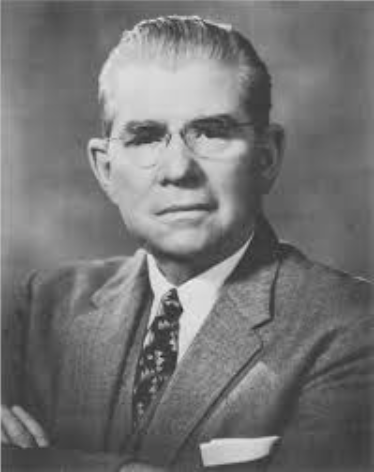History
Bill Heald
More than a century ago
The surgical approach to rectal cancer changed immensely in the last 100 years.
Before that time, cure was rare and perioperative mortality was high due to inexperience with anaesthesia, and lack of blood transfusion, and high risk for sepsis. In the twentieth century, improvements lead to better oncological results and therefore an increased survival.
In this period of time several people played important roles in optimizing understanding and treatment of rectal cancer.

Ernest Miles
1908
Abdominoperineal resection of the rectum (APR) with focus on a more extensive mesenteric lymphadenectomy
Cuthbert Dukes
1930
Avoidance of radical caudal resection based on the fact that spread from rectal cancer was overestimated in that direction
Claude Dixon
1948
Shift from radical APR to more sphincter-sparing procedures. Anterior resection as standard of care for middle and upper rectal tumors.
Mark Ravitch
1958
Discovery of Russian stapling gun for reanastomosis and introduction of modifications
Alan Parks
1972
Sphincter preservation in low-lying tumors with construction of a coloanal anastomosis
Richard Heald
1982
Total Mesorectal Excision (TME), as en-bloc resection of tumour and mesorectal tissue based on the embryologic development of the hindgut

Antonio Lacy
2012
Change to a transanal approach for the lowest part of the rectum introduced as Transanal Total Mesorectal Excision
Ernest Miles
1908
In 1908, William Ernest Miles published an article in the Lancet describing an abdominoperineal amputation of the rectum (APR) based on anatomical and biological principles. He focused on defining the nature of perirectal lymphatic spread and challenged the traditional anatomy of rectal lymphatics previously described by Dimitri Gerota in 1895. In his manuscript, Miles recommended a more extensive mesenteric lymphadenectomy in order to prevent recurrence.
He identified three zones of spread: downward, lateral and upward of which he considered upward to be most important.
To remove the rectum and the upward zone of spread he followed five principles:
1. Creation of an abdominal colostomy
2. Resection of the rectum, sigmoid and its blood supply
3. Resection of the mesorectum
4. Removal of the lymph nodes over the bifurcation of the common iliac artery
5. Wide perineal resection with removal of the levator ani muscle
The procedure was called the “abdominoperineal resection” (APR)
For the first 12 procedures he described a mortality rate of 42% and a one year tumor free survival of 58%.
These results were very good for that period of time.

Cuthbert Dukes
In 1930, pathologist Cuthbert Dukes demonstrated that downward and lateral spread from rectal cancer was overestimated by Miles as it was unusual unless the cancer was advanced and lymphatics along the superior vessels were blocked by metastases. Therefore many thought that a radical downward resection could be avoided.

Claude Dixon
In 1948, Claude Dixon, surgical chair at the Mayo Clinic, reported on the use of a 2-stage procedure to remove lesions between 6 and 20 cm from the dentate line. Nodal involvement was similar for specimens from 16-20 cm, 11-15 cm, and 6-10 cm. Overall, perioperative mortality was 2.6% and 5-year survival was 64%. Dixon’s results shifted the focus of rectal cancer from the radical APR to more sphincter-sparing procedures. Anterior resection became the standard of care for middle and upper rectal tumors.

Mark Ravitch
In 1958 Mark Ravetich, an American pediatric surgeon, discovered wide use of surgical staplers during his travels to Russia, the country that pioneered these devices.
He made several modifications to the original Russian design, including:
- preloading
- pre-sterilization
- disposable cartridges
- staggered staple line

Alan Parks
In 1972 Alan Parks described a modification of the pull-through technique with construction of a coloanal anastomosis through the dilated anal canal. The technique allowed lower rectal tumors to be completely excised without the need for a permanent colostomy.

Richard Heald
In 1982 Richard Heald introduced the Total Mesorectal Excision (TME), which involved en bloc resection of the tumor and the mesorectal tissue to the level of the levator muscles through sharp dissection based on the embryologic development of the hindgut. This technique lowered local recurrence rates and resulted in reproducible specimens for pathological examinations. Pathologist Phil Quirke standardized examination of the specimen and introduced a score for grading of the quality of the resection based on the quality of the specimen.

Antonio Lacy
In 2012 Antonio Lacy and Patricia Sylla demonstrated the Transanal Total Mesorectal Excision during live-surgery and worked on standardization of the technique afterwards. Although feasible for all TME-procedures it is especially helpful when working space in the lower pelvis is limited and the specimen might be torn by traction from a transabdominal approach.
